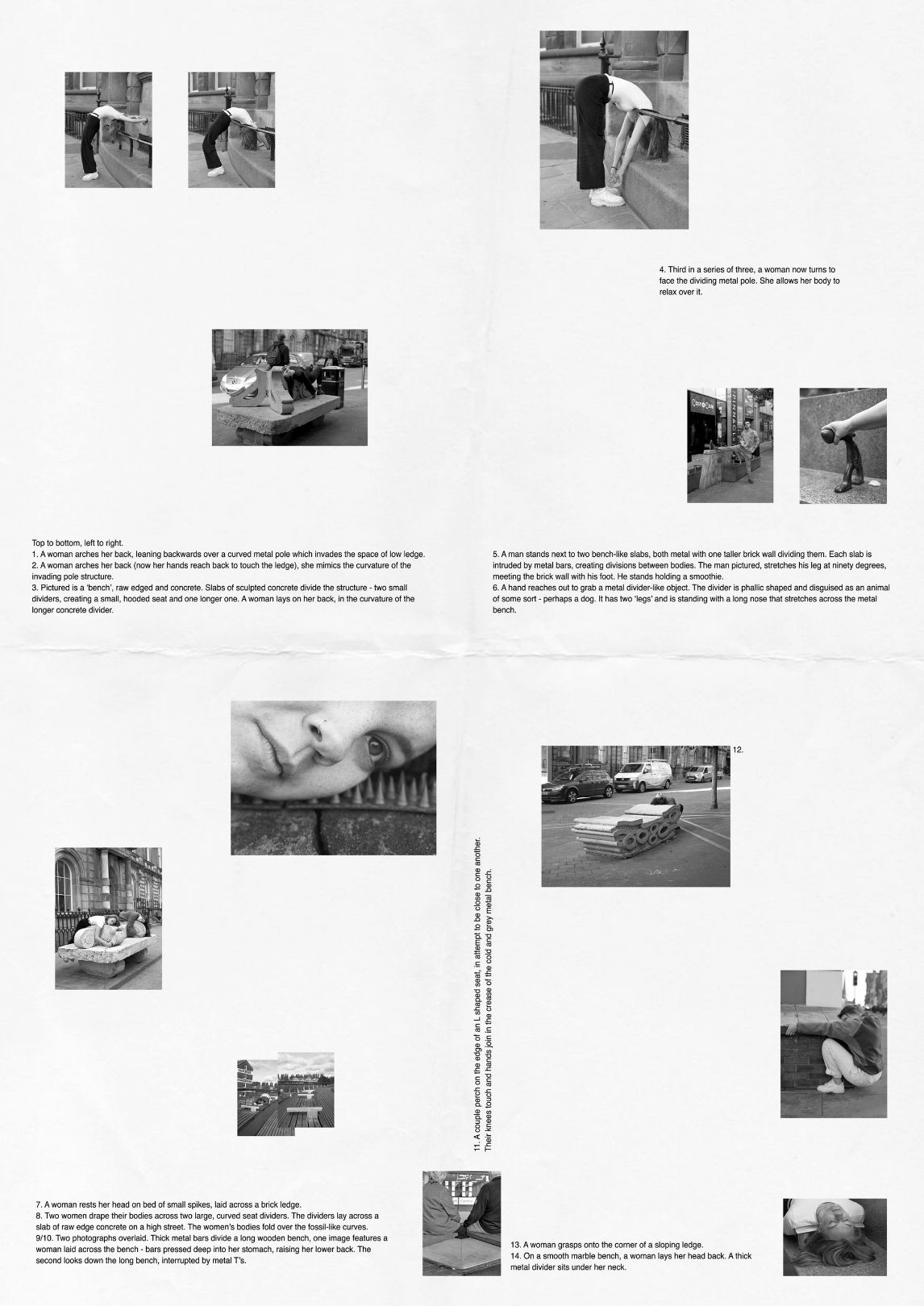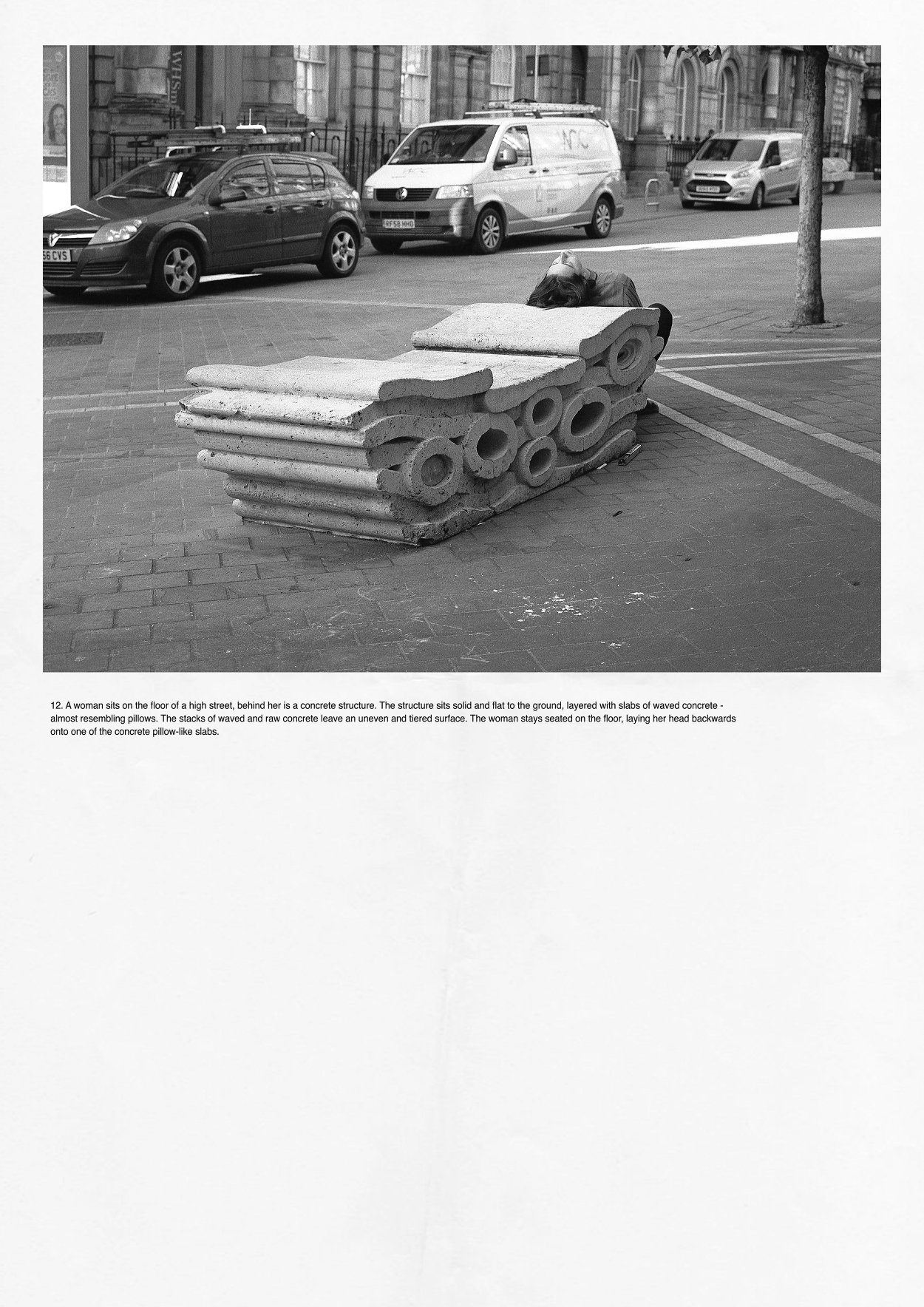Emily Ryalls (she/her) is an artist based in Wakefield. Ryalls’ practice incorporates photography and performance, and explores collaborative approaches that facilitate co-production.
Ryalls is currently working with The Art House, Wakefield, where she recently opened a new community darkroom facility to nurture local artists, with a special interest in supporting the growth of a socially engaged photography network in the area. She also founded The Merrie Collective in 2020.
For her bursary project, Ryalls has started exploring our relationship with hostile architecture; an urban design practice which intentionally restricts behaviour in public spaces, described by Ryalls as ‘anti-people’.
Using her Bronica 645 medium format camera, Ryalls has captured a range of choreographed and improvised interactions between people and elements of hostile architecture across Leeds, Wakefield and Castleford. The resulting images are sometimes gentle, almost romantic but always uncomfortable: two people fold themselves over a concrete bench designed to discourage lying down and congregating, someone bends their body over railings used to deter sitting.
Ryalls processes her film in the darkroom at The Art House, Wakefield. For this project, she scanned the negatives and created a poster zine, folded it and re-scanned, creating the images above and playing with the discord between physical and digital experiences. Referencing a broadsheet newspaper, Ryalls work spills and bleeds across the page.
The pages include the marriage of text and images, featuring an image description for each photograph. The descriptions stem from an exploration of how we accept these hostile structures as part of our landscape, provoking thought into the difference between how we respond to visual signifiers and written and spoken descriptions of our public spaces.
You can learn more about Ryalls’ practice, process and the darkroom at The Art House in the video below.

